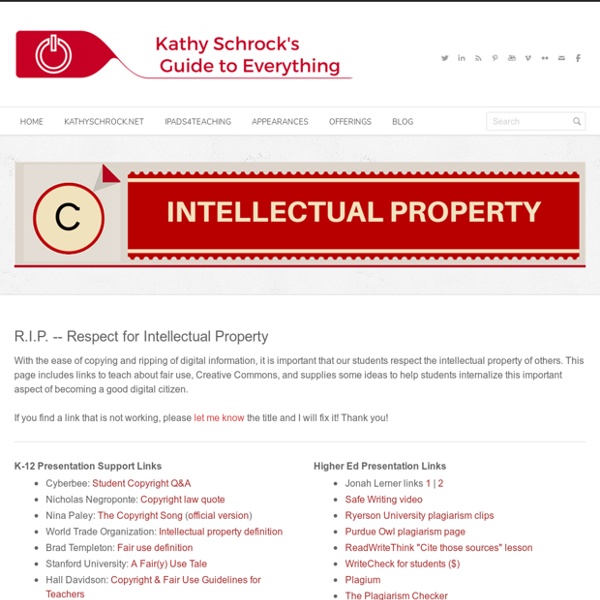



http://www.schrockguide.net/intellectual-property.html
Teaching Copyright How Intellectual is Your Property [INFOGRAPHIC]? - UpCounsel Blog Did you know that intellectual property (IP) accounts for 20% of the US gross domestic product (GDP) and for 40% of the country’s economic gains? Or that IP-intensive industries employ close to 55 million workers? If you find yourself in one of these fields, it’s important to know the background of intellectual property and IP law in order to understand how to protect your own work.
The Educator's Guide to Copyright and Fair Use A five-part series When it comes to copyright law and the application of fair use exceptions, ignorance is definitely not bliss! Learn how to educate yourselves and your students and avoid making a costly mistake! You really did plan to find time over the summer to familiarize yourself with the latest information on copyright law. Tahir Amin: Lawyer + IP Evangelist Professional Role Current Titles: Director of Intellectual Property
TeachersFirst's Copyright and Fair Use Resources This is a tool that explains everything you need to know about copyright, and then some! Learn what copyright is and is not, what it protects, what Public Domain is, what the difference is between Copyright and Plagiarism, and a LOT more. Do you remember what the acronym DMCA stands for? Click on the twelfth item in the Table of Contents to find a link to The Ultimate DMCA Guide for Students. Hint: Copyright Infringement Consequences.
Teaching Copyright
If you have not heard of Kathy Schrock, you are missing out as she provides a plethora of information and links about copyright and intellectual property. It is like one-stop shopping when you visit this site. Happy reading! by annambaker Feb 5